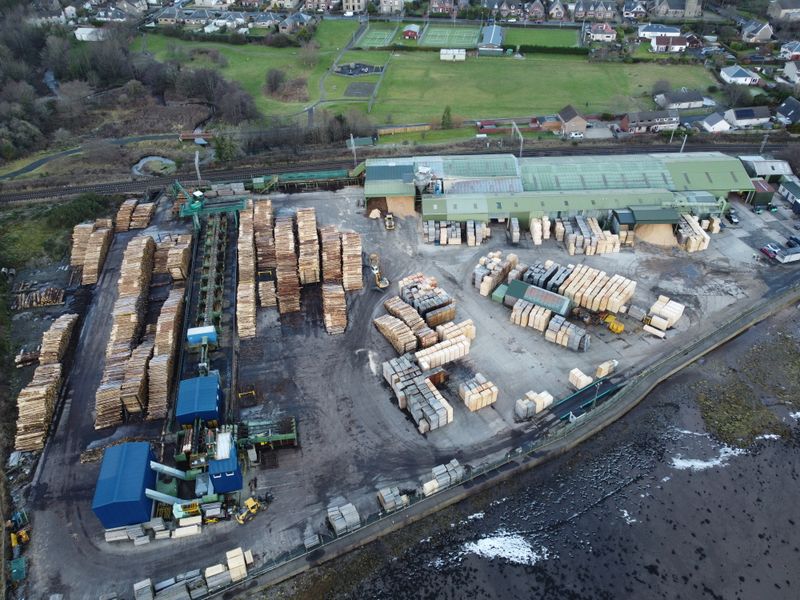An insight into Ridings sawmill at Cardross and the contra
The site that Ridings sawmill stands on has been home to sawmilling for over one hundred years. Lindsay McKechnie and Amanda Bradley are the current custodians of the independent softwood sawmill, and the third generation of the Riding Family to run the mill.
Ridings has been in the family since the early 1970’s when the duo’s Grandfather, Fred Riding, bought shares in the privately owned sawmill. Fred originally owned the locally renowned 7 stars sawmill in Wigan, Lancashire from the early 1950’s to the 1980’s, which predominantly produced pit props for coal mines. Both Fred’s sons, Alfred and Frank worked with him at the sawmill.
In 1976 Fred bought out the remaining shares of the Cardross sawmill so it was owned outright by the Riding family. Fred and his sons continued running both sawmills until the early 1980’s when the decline in coal-mining had an adverse effect on their sawmill in Wigan.
Up until 1970, the deep coal mining industry employed 500,000 miners at their 483 pits producing 177million tonnes of coal per year. As the railways moved into diesel and electric power, output slumped to 114 million tonnes and the workforce was reduced to 300,000 – over 240 pits closed, sparking the beginning of the end for deep coal mining. The strikes in 1972 caused blackouts and much of the UK’s industry was forced to go onto a three-day week. The decline continued with cheap coal arriving from low wage economies in Russia. By the 1990’s, just 21 million tonnes was mined from privatised deep mines using 13,000 miners.
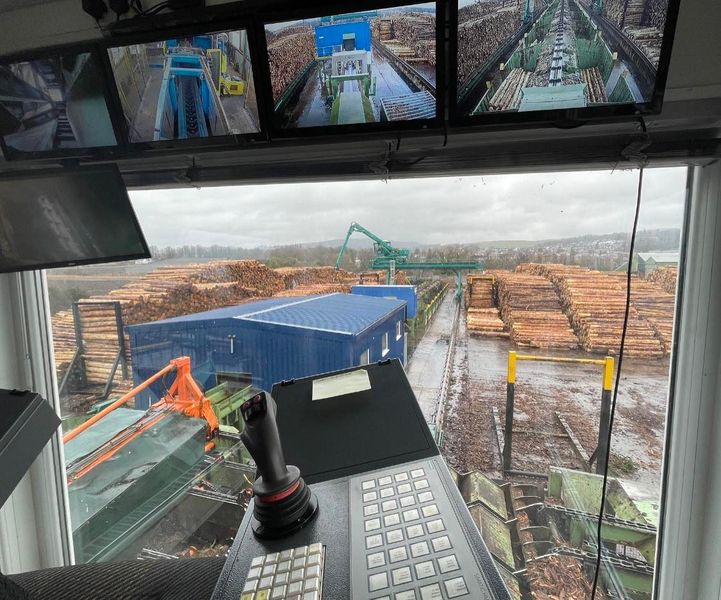

Those sawmills in mining areas began to suffer as many produced just one product, pit props for the National Coal Board. With the pit prop market drying up and the UK in the grips of a recession, alternative markets for timber were hard to find, many sawmills fell by the wayside. In 1980 when the Sawmill at Wigan fell into administration, Frank began working at the sawmill in Cardross and moved his family up at the end of 1981. Fred stayed in Wigan but remained heavily involved in the sawmill right up until he died aged 89.
Frank immediately set about modernising the mill for new markets, including fencing, so that they would never be solely dependent on one customer again. Under Frank’s leadership it wasn’t long before there were major changes at the Cardross site. An EWD Quad Reducer Bandsaw was installed in 1991 and in 1995 an EWD Optimising Edger line, both of which are still in use today! The bandsaw is an extremely productive saw which converts large pieces of lumber into smaller sections while minimizing waste. This was the start of a long-lasting relationship with the German Company EWD, who specialise in sawmilling technology and equipment.


Frank had a hands-on approach to all installations, which was no mean feat as the aerial photo shows the many constraints the site has. Expansion is not an option as the site is in a triangular shape and hemmed in on all three sides by the seafront, a potato field and the railway line. Frank constantly sought ways to improve efficiency, he installed a Brodbaek pallet crosscut and tray sorting lines in the mid 1990s, a Stenner seven-head resaw line in 2003, a Costa second pass line in 2009 and a Holtec log line incorporating a Valon Kone de-barker and a Jorg Electonik 3-D Scanning system in 2015. In 2016 Riding’s were the first sawmill in the UK to use a Portal Crane to service the log yard. Frank had successfully filled every gap and utilised to its full potential every square inch of the mill at Cardross.
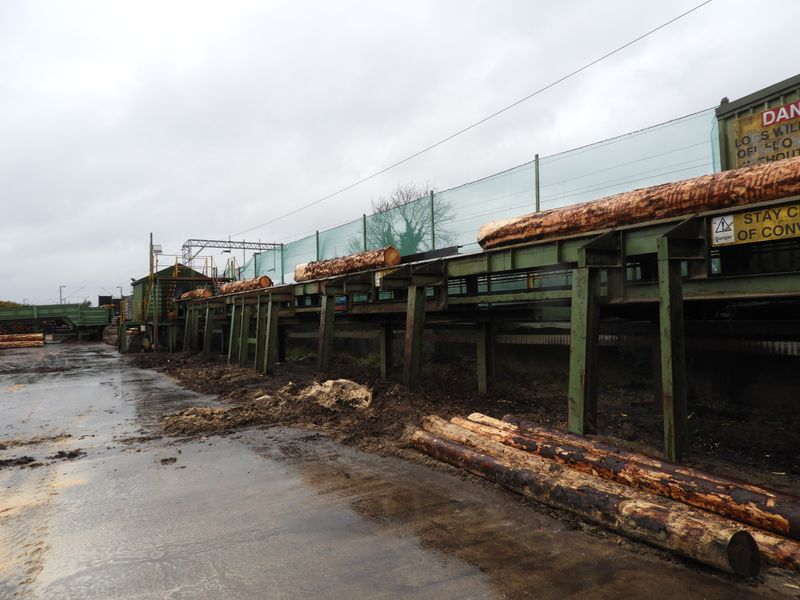

Sadly, Frank died in 2018, just months before a Triple Stenner Horizontal Resaw was commissioned to reduce one pass at the quad, which would increase productivity up to 20%. This again was Frank’s idea and he carried out all the planning and designed the groundworks despite being seriously unwell. However, the modernisation never stops, a new office block including a meeting room and staff canteen have been built. Although I was told Frank would have kept his office in the old block, as the new offices are too well insulated and he wouldn’t have been able to hear the saws when having to do administration work. Frank will always be in the hearts and minds of Ridings Sawmill and his legacy will be felt there for an exceptionally long time.
Further modifications are planned for the near future, the main mill’s computer system uses outdated components which are becoming more and more difficult to source. A new system is earmarked to be installed but this will involve a complete shutdown, so the timing has to be carefully planned.
THE MILL
I was invited to visit the sawmill by Lindsay McKechnie and Kirsty Robb, the log procurement and harvesting manager, and was looking forward to seeing what happens to our sawlogs after leaving the forest.
Kirsty met me when I arrived, and we decided we would start our tour at the automated weigh bridge and then go on to the log deck/sorting line. The log deck office was up two flights of stairs with a commanding view of the whole sawmill. Everything was tidy and spotlessly clean – the whole of the mill and the log yard.
Lorries loaded the 3.7m logs straight on to the log deck. The lorry crane operators do their best to keep all the buttresses in one direction but the Cranab FC12 crane that is mounted to the side of the log deck, turn any that are the wrong way round. The reason for the logs being in one direction is so that if there are any large toes sticking out the butt reducer will grind them off leaving the log in a cylindrical shape. Once through the butt reducer the logs continue their journey down the log sorting line.


Allan McErlean, the operations manager, has worked at the mill for over 30 years, he joined us to explain more about the workings of the sawmill. The mill only takes in two lengths of saw log’s, 3.7 and 4.9m which are re-sawn to the desired lengths. The sorting line has 10 bins on the left for 3.7’s and the same on the right for 4.9.s. As they travel down the sorting log line, they are scanned at top and mid-diameter and ejected into the specified bin. This increases productivity as the saws can be set up for a specific diameter class. The overhead portal crane then empties the individual bins and stacks them so that the mill can have a run of specific diameter logs. There is zero waste in the mill, bark, shavings, woodchip and sawdust are used for biomass and manufacturing chipboard and MDF. Container lorries remove the residue which is stored separately and under cover. Another good market for sawdust is from farmers, horse owners and stables who use a substantial amount of sawdust on the floor when cows and horses are kept inside during the winter months.
Kirsty and Alan then took me to the main building which houses the sawmill, this process is almost impossible to explain as everything happens so quickly. The sawn timber heads off in a multiple of directions to be re-sawn for different uses. It was incredible watching the wood being sawn and stacked and the waste being removed to the appropriate areas. Any larger waste particles are fed directly into a chipper via a conveyor feed so that the woodchip is a uniformed size.
There is a full time saw doctor with his own workshop for taking care of all the bandsaw blades. Alan explained that the main blades are changed each lunchtime while the mill is on a break. This way they work at their optimum performance and use less energy to process the timber.
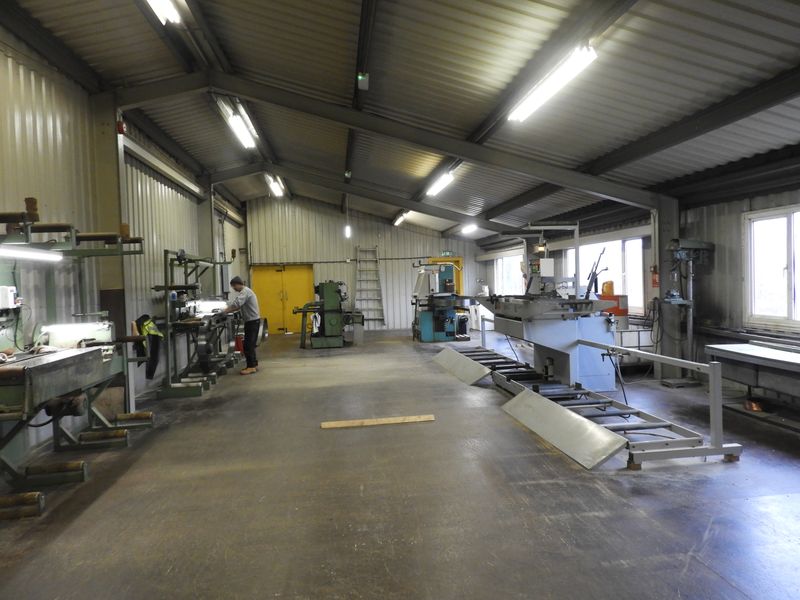

There are some standalone saws for specific tasks, the Stenner horizontal 7 head resaw, which is used for producing thin slats and feather edged boards from block cut in the mill and a Kalin Multi rip with planer heads for producing framing.
The sawmill produces fencing products for the garden markets, framing and slats for shed markets, ungraded carcassing, arris rails, pallet wood, blocks and bearers. 95% of the products head south into England, with a small amount, and all residues, sold locally.
Ridings employ 50 people on site, 35 man the sawmill, 14 office staff and Kirsty who spends her time between the mill and the forest making sure the mill has a constant supply of timber. Most of the employees I spoke to had been in the job for a considerable amount time and staff turnover was exceptionally low.
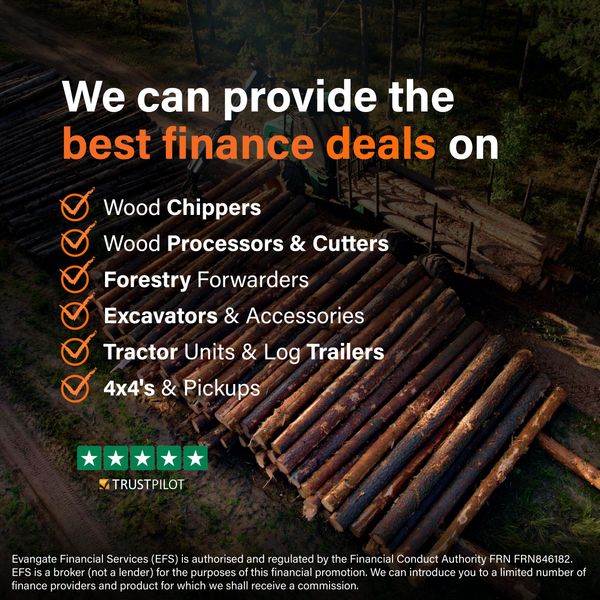

All timber is locally sourced from West Argyll and Cowal forest districts. The Sawmill uses their own contractor who harvests the timber. They purchase standing and buy in the surplus
of round timber required from local merchants. Ridings bring in around 70,000 tonnes of roundwood per year, it is predominately spruce with the remaining 10% being of mixed species softwoods.


The mill aims to be cutting 6,000 tonnes per month but has the capacity to go higher if needed. When I visited there was a good stock of round wood sorted into top diameters ready to be processed. I did notice that there was not much stock of sawn timber in the yard, which is a particularly good sign of a well-run sawmill.
FORESTRY CONTRACTOR
Getting good quality timber is important to running a successful sawmill and this is where Kirsty Robb and their sole harvesting contractor Gary Sheppard come into play.
Gary has been contracting to Riding’s for the last five years and it was a chance meeting between the two that started the ball rolling. Gary’s daughter and Kirsty are both keen horse women and it was at an equestrian event Gary and Kirsty got chatting and the rest, as they say, is history.
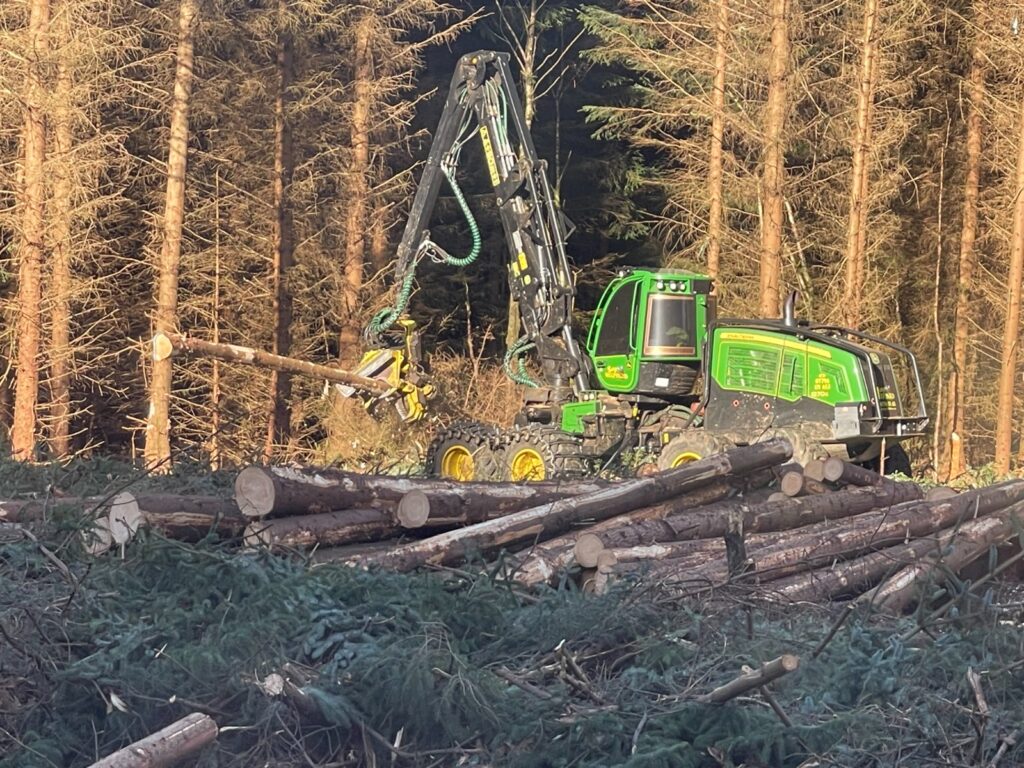

I have been helping Gary off and on since December last year by operating his forwarder until he was able to find a full-time forwarder operator. It didn’t take long to realised that Gary is a conscientious and productive operator who takes a lot of pride in his work and equipment. The first site I extracted was in West Argyll and it was perfect timber for the mill as it was predominately spruce saw logs with a very small percentage of chipwood. Kirsty explained that using their own contractor is a massive asset to the mill. If Ridings need a specified amount of a certain product quickly, a phone call to Gary gets the ball rolling and the timber to roadside in record time. This isn’t so easy to organise when you are dealing with a larger contracting company running multiple harvesting sites. Kirsty also pointed out that Gary has a good eye when harvesting and is able to maximise log production without sacrificing quality when harvesting crops of a poorer form.
Gary is a big fan of John Deere harvesters and Komatsu forwarders. The very first harvested he operated when he started out in forestry was a 1470D and although he has tried other types on occasions, he hasn’t found one so far that would make him want to switch brands. The 1270G with a 415 harvesting head is two years old and was purchased new from John Deere. The forwarder is a different story though and was bought second hand from Komatsu. The is one of the only mid-range forwarders that is capable of carrying around 18 tonne of 4.9 logs. This is beneficial in increasing production and reducing running costs when you have long extraction distances.


This was a fantastic visit as I was given an insight into not just how the sawmill operates but the pride and passion that Lindsay and Amanda have for the business.
Although Frank is no longer physically there to offer guidance, he has left his daughters, Lindsay and Amanda and Amanda’s daughter Erica, who has recently started in the business, with the knowledge, grit and determination to keep Riding’s sawmill at the forefront of the timber industry for years to come.
Ridings Sawmills (Cardross) Ltd,
Clyde Sawmills,
Cardross, Dumbarton, G82 5NP.
01389 841263
Forest Machine Magazine is written and edited by a forest professional with over 40 years hands on experience. We are dedicated to keeping you informed with all the latest news, views and reviews from our industry.
To support us you can subscribe to our bi-monthly magazine which is delivered to your door from only £15 per year.
Subscribe here
#homeoflogging #writtenbyloggersforloggers #loggingallovertheworld
-

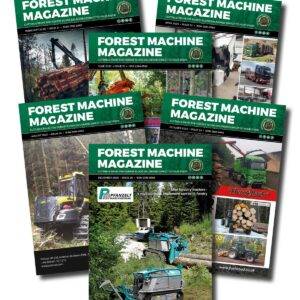 1 Year Subscription£0.00
1 Year Subscription£0.00 -

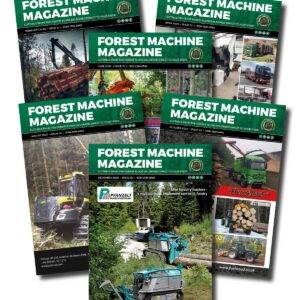 2 Year Subscription£0.00
2 Year Subscription£0.00 -

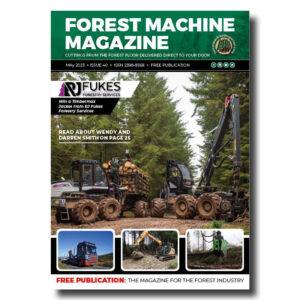 Issue 40£0.00
Issue 40£0.00 -

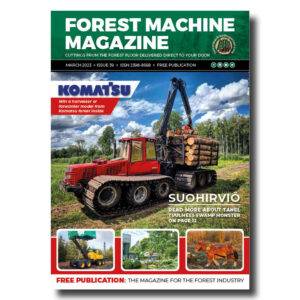 Issue 39£0.00
Issue 39£0.00 -

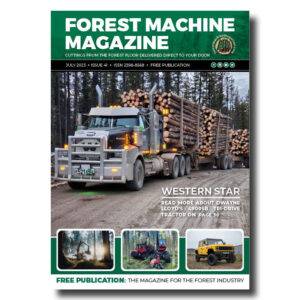 Issue 41£0.00
Issue 41£0.00 -

 Sustainable Logging: Powering The Planet T-Shirt£17.50 – £20.00
Sustainable Logging: Powering The Planet T-Shirt£17.50 – £20.00

